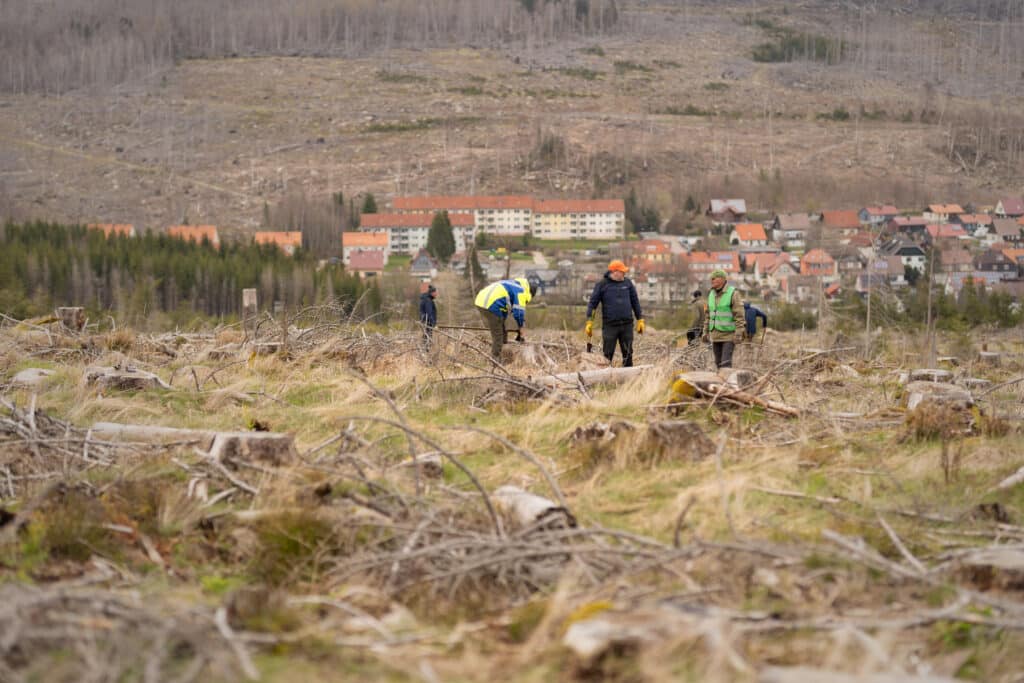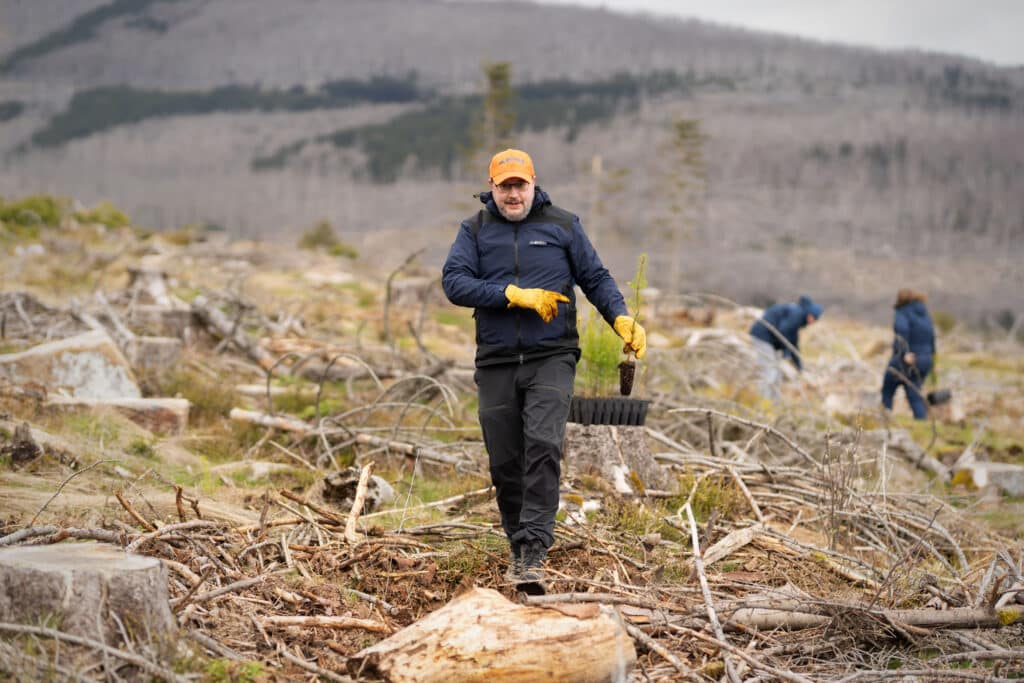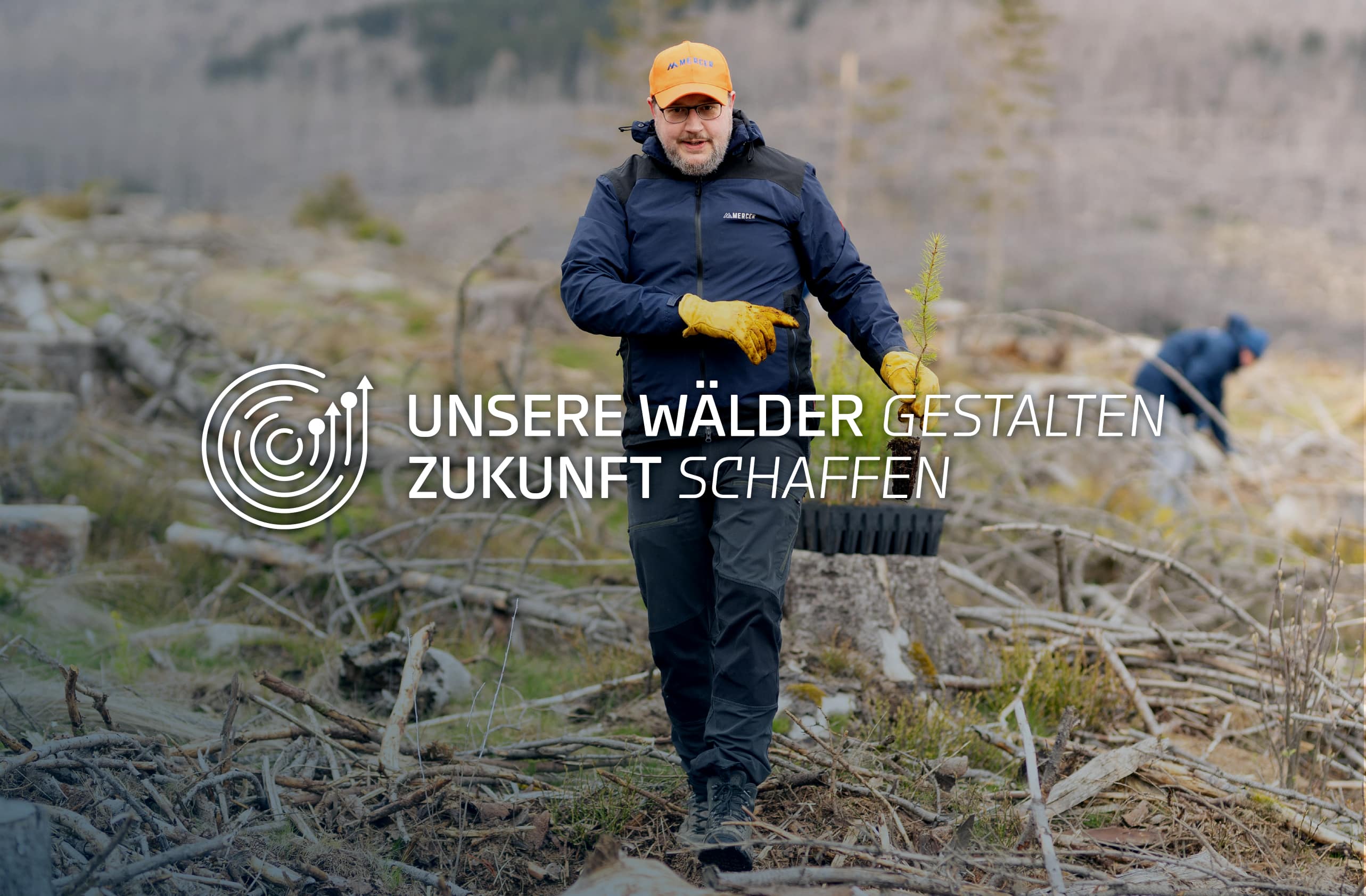As a wood buyer in Germany, I have been in constant contact and built long-term relationships with stakeholders within the forestry supply chain since 2006. Nine years later, in 2017, I joined Mercer Holz as their principal buyer for Saxony-Anhalt (Harz) and Lower Saxony regions. Currently, my work revolves around acquiring new suppliers and cultivating long lasting relationships with them, supporting existing suppliers, working in cooperation with our Wood Disposal Team and developing future-proof agreement tenders (pricing). I maintain constant on-the-ground pulse checks with our suppliers, who are mainly private forest owners in Germany.
But it’s not just about sales or the wood buying agreements—for me, it’s personal: I am passionate about wood itself. I studied forestry and forest ecology in Göttingen, graduating first with a bachelor’s degree. I then specialised in wood biology and wood technology at a Master’s degree level.
Despite leaving the textbooks behind nearly two decades ago, I keep up on the latest scientific research and stay abreast of what is happening within the German forestry landscape. Over the past few years, the plight of the German forests has really hit media at a national and global level—with good reason.

German forests today
Germany has suffered at the hands of climate change with droughts and flash flooding since 2018. This has really affected the forest stands all over Germany—latest reports say that 1 in 4 trees are dead. The drought weakened the strength of the forests, mainly spruce, allowing the spruce bark beetle to cause widespread decimation. What we have now are large swathes of the forest completely flattened by the bark beetle. Due to the mass reproduction of the beetles, surrounding trees are quickly infested.
Other than on their TV screens, the German public do not see this destruction apart from when they drive out to these forests. But the damage is clear enough, just drive through the Harz region and the horror is clear.
The tree
Plants are the only living things that absorb CO2 and release valuable oxygen into the atmosphere. And forests are the lungs of our planet. A tree continuously binds CO2 throughout its life, which increases climate change. But once the tree reaches its life expectancy, it dies. And then it releases all the trapped CO2 back into the atmopshere.

Have you ever driven past a field with a lone dead tree? A dead tree can continue to stand for decades—releasing CO2. (Of course, we realise that a rotting tree provides its own ecosystem with the fungi and insect world it supports.)
On the other hand, a managed forest—that is, a forest that is nurtured and cultivated by experts and foresters—can bind C02 more effectively. Managed forests include logging—and does not always mean reducing a tree to nothing. Trees can regrow effectively given the right conditions.
What many do not know: Even after the tree is cut down, the wood continues to bind the CO2 it has already absorbed. Our furniture, houses and furnishings made of wood do not release CO2. CO2 is only released when the wood is burned.

The way forward
To me and to Mercer Holz, the following clearly applies: material use BEFORE energy use. Only this way can wood serve as a CO2 reservoir.
Research and links
- https://www.eea.europa.eu/articles/forests-health-and-climate-change/key-facts/trees-help-tackle-climate-change
- https://theconversation.com/decaying-forest-wood-releases-a-whopping-10-9-billion-tonnes-of-carbon-each-year-this-will-increase-under-climate-change-164406
- https://www.nature.com/articles/s41586-021-03740-8

